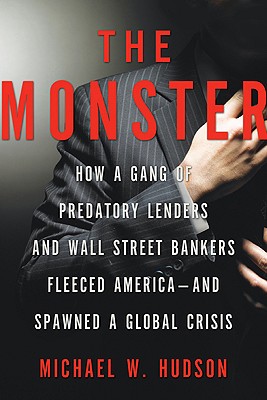
The Monster:How a Gang of Predatory Lenders and Wall Street Bankers Fleeced America--and Spawned a Global Crisis
Book Summary
Before the housing crisis erupted in late 2007, there was a decade-long period of subprime lending targeted at the most vulnerable members of society. The elderly, those facing financial difficulties, and families in transition were forced to pay significantly higher borrowing costs to compensate for their poor credit rating scores.
However, the subprime mortgage lending gathered momentum in the late 90s after Wall Street streamlined the securitization process, and provided a gusher of capital to the non-bank financial companies that operated outside the purview of financial regulators.
With a sharp escalation in the availability of capital, all that subprime lenders had to do was to find borrowers and sell loans back to Wall Street. Bankers worked overtime to mint new securities from these loans and sell for a fee to unsuspecting global investors. Lehman Brothers and Bear Stearns, among others, provided ample capital through their partners or subsidiaries, repackaging these loans to investors and earning hefty fees in the process. The only problem was that the borrowers did not have a clue what they were getting into—something that in many cases was an outright fraud or deception.
In The Monster, award-winning reporter and author Michael W. Hudson narrates a fascinating web of deception and collusion between politicians and subprime lenders while regulators looked the other way. The predatory lending has its origin in the rush to find a customer at any cost in order to sell the loans immediately to investors with very little consequences.
In this remorseless race lenders had only one goal in mind: keep borrowers in debt forever and refinance their customers again and again while financial regulators focused on the “safety and soundness” of lending institutions and not how they treated their customers. During the peak years between 2004 and 2006, subprime lenders were raising and selling more than $700 billion dollars of loans a year before the faulty model collapsed under the heavy weight of mounting loan defaults.
